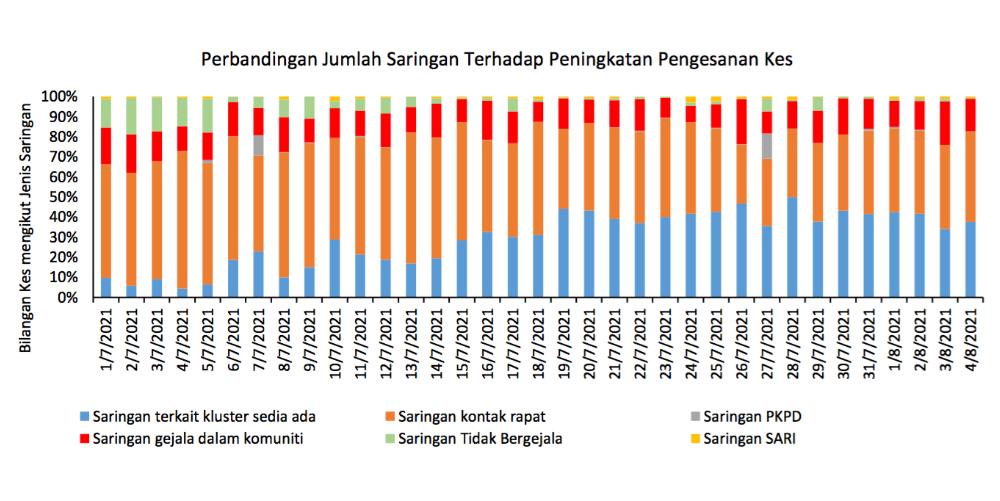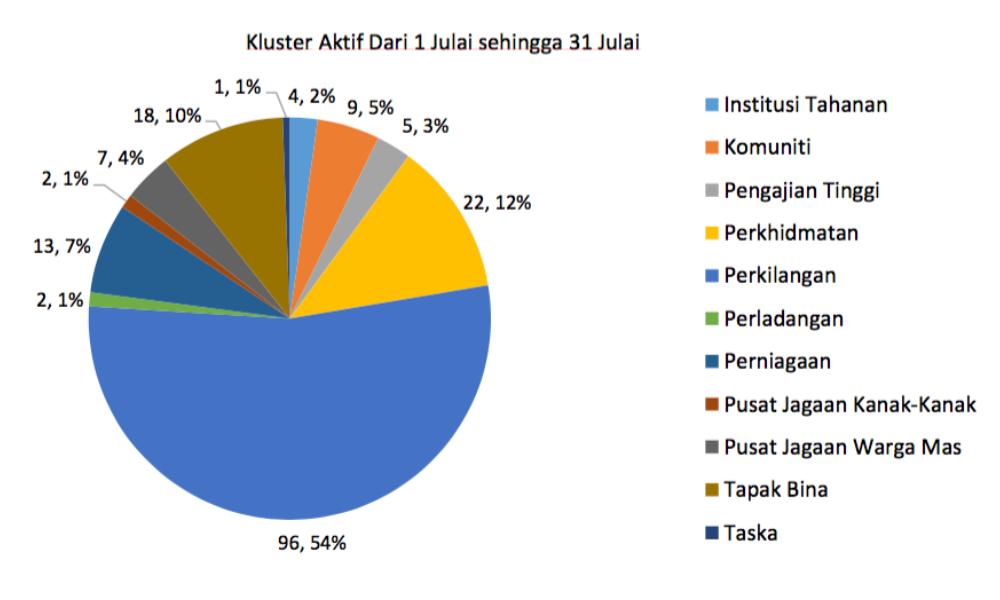An analysis of Covid-19 cases in Selangor throughout July has attributed 96 out of 179 clusters to factories.
This represents 54 percent of all active clusters detected in the state.
Last month also saw a rise in cases contributed by clusters to the overall number of infections.
Selangor is the epicentre of the current Covid-19 crisis.
These statistics were presented by Selangor Health Director Dr Sha’ari Ngadiman in a press conference with selected media today. The event was broadcasted online.

In the graph above, the light blue bar denotes cases from existing clusters. The orange bar denotes cases from close contacts.
Beginning at around July 15, the percentage of infections from cluster cases began increasing. The number of new infections hit a peak on July 28 when it made up about 50 percent of all cases recorded that day.
Close contacts have continued to be a significant contributor, but cluster cases increasingly matched its contributions in the second half of July.
“From the tests done on cases, if we look at the total number of cases, close contacts are the biggest contributor of detected cases, almost 40 percent.
“Symptomatic cases (contribute) 22 percent, workers 20 percent.
“Meanwhile, cases from non-work clusters are 14 percent, and those from other (sources) contribute 1.1 percent to Selangor,” Sha’ari said.
These numbers were not provided in the report shared with the media.
Majority are factory clusters
Sha’ari also provided a breakdown of active clusters in Selangor.

Of the 179 active clusters in the state last month, more than half (96) were from factories.
This was four times more than the next largest contributor, which was the services sector with 22 clusters.
Construction sites were the third-largest contributor, with 18 clusters.
His data did not state the number of cases the clusters accounted for.
Factory workers infected at home
When asked why factories were the biggest contributor to clusters, Sha’ari speculated that workers were getting infected at their dormitories or homes.
The official said that most factories were found to be in compliance with the government’s standard operating procedures (SOPs).
“The source (of infection) is not in the factories. When we conducted checks, a majority of factories followed SOP.
“But then why is there transmission? This may be (happening) outside the factories.
“This is what we think. Many live together in dormitories or homes. When they return to the factory, they mix with others in the factory,” he explained.
Sha’ari thus urged all factory workers to abide by SOPs no matter at all times, whether they were inside or outside their workplaces. - Mkini



No comments:
Post a Comment
Note: Only a member of this blog may post a comment.